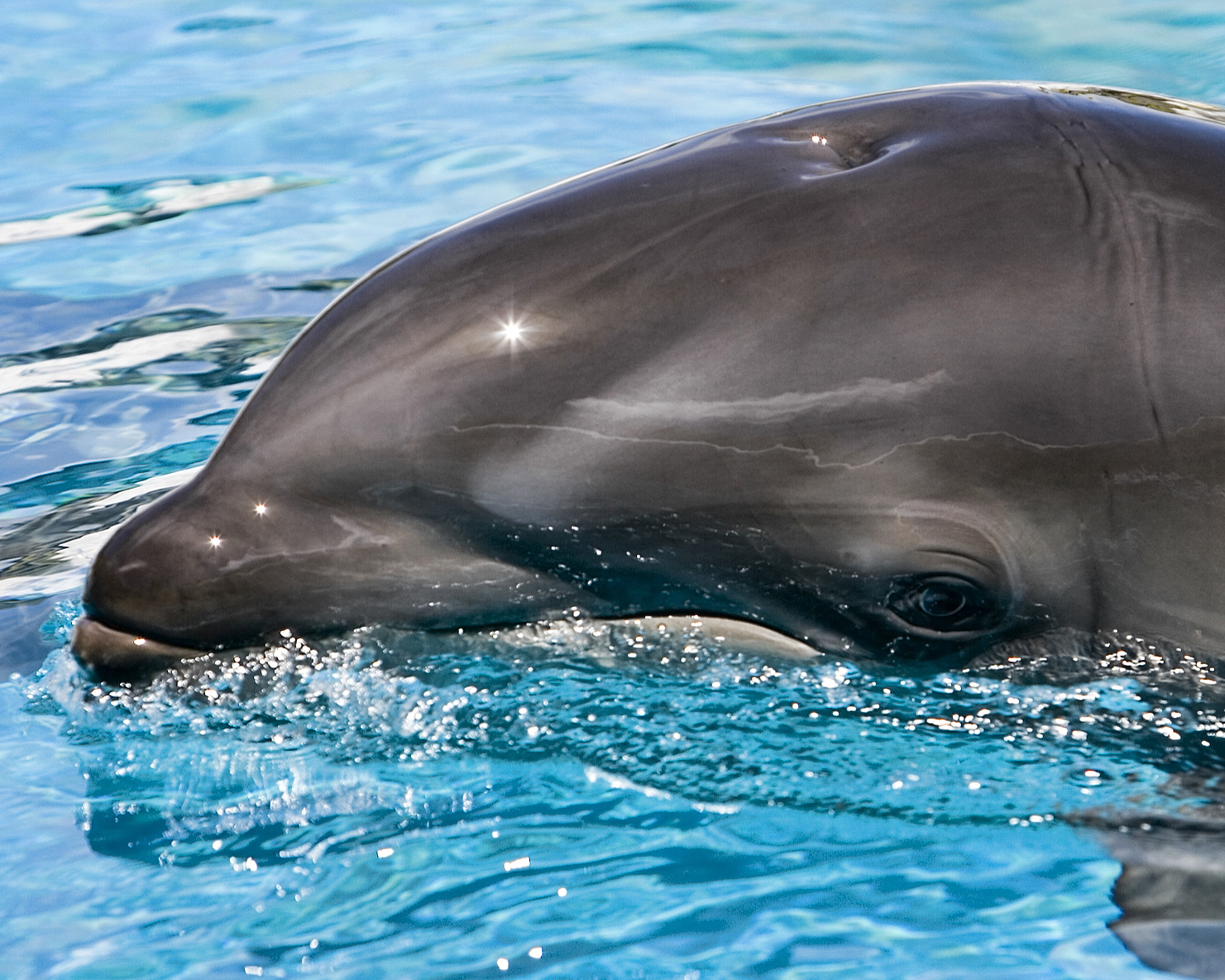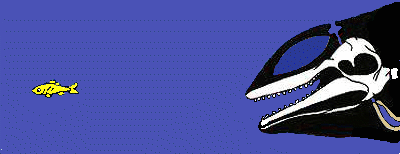|
Tursiops
The bottlenose dolphin is a toothed whale in the genus ''Tursiops''. They are common, cosmopolitan members of the family Delphinidae, the family of oceanic dolphins. Molecular studies show the genus contains three species: the common bottlenose dolphin (''Tursiops truncatus''), the Indo-Pacific bottlenose dolphin (''Tursiops aduncus''), and Tamanend's bottlenose dolphin (''Tursiops erebennus''). Others, like the Burrunan dolphin (''Tursiops (aduncus) australis''), may be alternately considered their own species or be subspecies of ''T. aduncus''. Bottlenose dolphins inhabit warm and temperate seas worldwide, being found everywhere except for the Arctic and Antarctic Circle regions. Their name derives from the Latin ''tursio'' (dolphin) and ''truncatus'' for the truncated teeth (the type specimen was old and had worn down teeth; this is not a typical characteristic of most members of the species). Numerous investigations of bottlenose dolphin intelligence have been conduct ... [...More Info...] [...Related Items...] OR: [Wikipedia] [Google] [Baidu] |
Common Bottlenose Dolphin
The common bottlenose dolphin or Atlantic bottlenose dolphin (''Tursiops truncatus'') is one of three species of bottlenose dolphin in the genus ''Tursiops''. The common bottlenose dolphin is a very familiar dolphin due to the wide exposure it receives in human care in marine parks and dolphinariums, and in movies and television programs.Leatherwood, S., & Reeves, R. (1990). ''The Bottlenose Dolphin''. San Diego: Academic Press, Inc., Common bottlenose dolphins inhabit temperate and tropical oceans throughout the world, absent only from polar waters.Jenkins, J. (2009''Tursiops truncatus'' Animal Diversity Web.Klinowska, M. (1991). ''Dolphins, Porpoises and Whales of the World: The IUCN Red Data Book''. Gland, Switzerland, U.K.: IUCN, While formerly known simply as the bottlenose dolphin, this term is now applied to the genus ''Tursiops'' as a whole. As considerable genetic variation has been described within this species, even between neighboring populations, many experts think ... [...More Info...] [...Related Items...] OR: [Wikipedia] [Google] [Baidu] |
Burrunan Dolphin
The Burrunan dolphin (''Tursiops australis'') is a proposed species of bottlenose dolphin found in parts of Victoria, Australia first described in 2011. Its exact taxonomy is debated: numerous studies support it as being a separate species within the genus ''Tursiops'' and occupying a basal position within the genus, with limited phylogenetic studies using different methodologies indicate that it is a subspecies of the Indo-Pacific bottlenose dolphin (''Tursiops aduncus''). The Burrunan dolphin is not currently recognized as a species by the Society for Marine Mammalogy or American Society of Mammalogists, which cites problematic methodology in the original study proposing species status and recommends further research. There are only two known resident populations in Victoria, Australia, with an estimated total population size of less than 180 individuals, and the predicted effective populations sizes small; Port Phillip Bay: 81.5, Gippsland Lakes and Tasmania: 65.5. Prior to ... [...More Info...] [...Related Items...] OR: [Wikipedia] [Google] [Baidu] |
Indo-Pacific Bottlenose Dolphin
The Indo-Pacific bottlenose dolphin (''Tursiops aduncus'') is a species of bottlenose dolphin. This dolphin grows to long, and weighs up to . It lives in the waters around India, northern Australia, South China, the Red Sea, and the eastern coast of Africa. Its back is dark grey and its belly is lighter grey or nearly white with grey spots. The Indo-Pacific bottlenose dolphin is generally smaller than the common bottlenose dolphin, has a proportionately longer rostrum (anatomy), rostrum, and has spots on its belly and lower sides. It also has more teeth than the common bottlenose dolphin — 23 to 29 teeth on each side of each jaw compared to 21 to 24 for the common bottlenose dolphin. Much of the old scientific data in the field combine data about the Indo-Pacific bottlenose dolphin and the common bottlenose dolphin into a single group, making it effectively useless in determining the structural differences between the two species. The IUCN lists the Indo-Pacific bottl ... [...More Info...] [...Related Items...] OR: [Wikipedia] [Google] [Baidu] |
Oceanic Dolphin
Oceanic dolphins or Delphinidae are a widely distributed family of dolphins that live in the sea. Close to forty extant species are recognised. They include several big species whose common names contain "whale" rather than "dolphin", such as the Globicephalinae (round-headed whales, which include the false killer whale and pilot whale). Delphinidae is a family within the superfamily Delphinoidea, which also includes the porpoises (Phocoenidae) and the Monodontidae ( beluga whale and narwhal). River dolphins are relatives of the Delphinoidea. Oceanic dolphins range in size from the and Maui's dolphin to the and orca, the largest known dolphin. Several species exhibit sexual dimorphism; the males are larger than females. They have streamlined muscular bodies and two limbs that are modified into flippers. Though not quite as flexible as seals, some dolphins can travel at speeds 29 km/h (18 mph) for short distances. Most delphinids primarily eat fish, along wit ... [...More Info...] [...Related Items...] OR: [Wikipedia] [Google] [Baidu] |
Tamanend's Bottlenose Dolphin
Tamanend's bottlenose dolphin (''Tursiops erebennus'') is a species of bottlenose dolphin that inhabits coastal waters in the eastern United States. This species was previously considered a nearshore variant of the common bottlenose dolphin '' Tursiops truncatus''. Taxonomy ''Tursiops erebennus'' was first described by Edward Drinker Cope as ''Delphinus erebennus'' in 1865. The type specimen was collected from a fisherman's seine net at the Red Bank community in West Deptford Township, New Jersey. Cope identified various physical differences between ''T. erebennus'' and ''T. truncatus'' (then known as ''Delphinus tursio''), including a smaller size, fewer vertebrae, and fewer ribs in ''T. erebennus''. However, ''T. erebennus'' was subsequently synonymized with ''T. truncatus''. Future studies and stock assessments instead recognized dolphins in the region as belonging to two ''T. truncatus'' ecotypes: a nearshore coastal type and an offshore type. Genetic analyses suggested that ... [...More Info...] [...Related Items...] OR: [Wikipedia] [Google] [Baidu] |
Toothed Whale
The toothed whales (also called odontocetes, systematic name Odontoceti) are a parvorder of cetaceans that includes dolphins, porpoises, and all other whales with teeth, such as beaked whales and the sperm whales. 73 species of toothed whales are described. They are one of two living groups of cetaceans, the other being the baleen whales (Mysticeti), which have baleen instead of teeth. The two groups are thought to have diverged around 34 million years ago (mya). Toothed whales range in size from the and vaquita to the and sperm whale. Several species of odontocetes exhibit sexual dimorphism, in that there are size or other morphological differences between females and males. They have streamlined bodies and two limbs that are modified into flippers. Some can travel at up to 30 knots. Odontocetes have conical teeth designed for catching fish or squid. They have well-developed hearing that is well adapted for both air and water, so much so that some can survive even i ... [...More Info...] [...Related Items...] OR: [Wikipedia] [Google] [Baidu] |
Miocene
The Miocene ( ) is the first epoch (geology), geological epoch of the Neogene Period and extends from about (Ma). The Miocene was named by Scottish geologist Charles Lyell; the name comes from the Greek words (', "less") and (', "new") and means "less recent" because it has 18% fewer modern marine invertebrates than the Pliocene has. The Miocene followed the Oligocene and preceded the Pliocene. As Earth went from the Oligocene through the Miocene and into the Pliocene, the climate slowly cooled towards a series of ice ages. The Miocene boundaries are not marked by distinct global events but by regionally defined transitions from the warmer Oligocene to the cooler Pliocene Epoch. During the Early Miocene, Afro-Arabia collided with Eurasia, severing the connection between the Mediterranean and Indian Oceans, and allowing the interchange of fauna between Eurasia and Africa, including the dispersal of proboscideans and Ape, hominoids into Eurasia. During the late Miocene, the conn ... [...More Info...] [...Related Items...] OR: [Wikipedia] [Google] [Baidu] |




